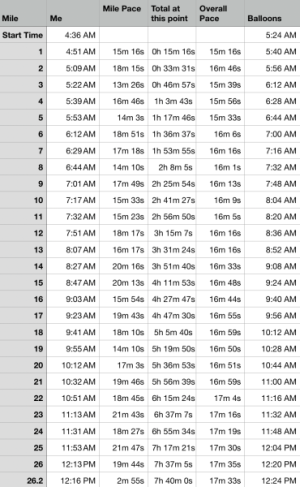The Expert
Has been to every Disney park in the world
- Joined
- Nov 8, 2009
- Messages
- 4,957
I've consistently had 27+ miles on my Garmin for all my WDW marathons. Weaving is REAL!how do you account for the 'extra' distance when targeting a pace or time for a race?
I don't actually worry about it that much, since I'm not racing for time. But I've seen a lot of other runners turn off auto-lap and hit the lap button manually at each mile marker.
There's also the school of pause or don't pause for character stops and bathroom breaks. I don't pause because I'm tracking my real time against the final pacers to keep an eye on my buffer and Garmin tracks my moving pace either way.
